Project Name
Tin TinPosted in
Restaurants, Design, Interior DesignLocation
Architecture Practice
Studio RENESAArea (sqm)
140Completed
2022| Detailed Information | |||||
|---|---|---|---|---|---|
| Project Name | Tin Tin | Posted in | Restaurants, Design, Interior Design | Location |
Chandigarh Chandigarh
India |
| Architecture Practice | Studio RENESA | Area (sqm) | 140 | Completed | 2022 |

Photography by Niveditaa Gupta.
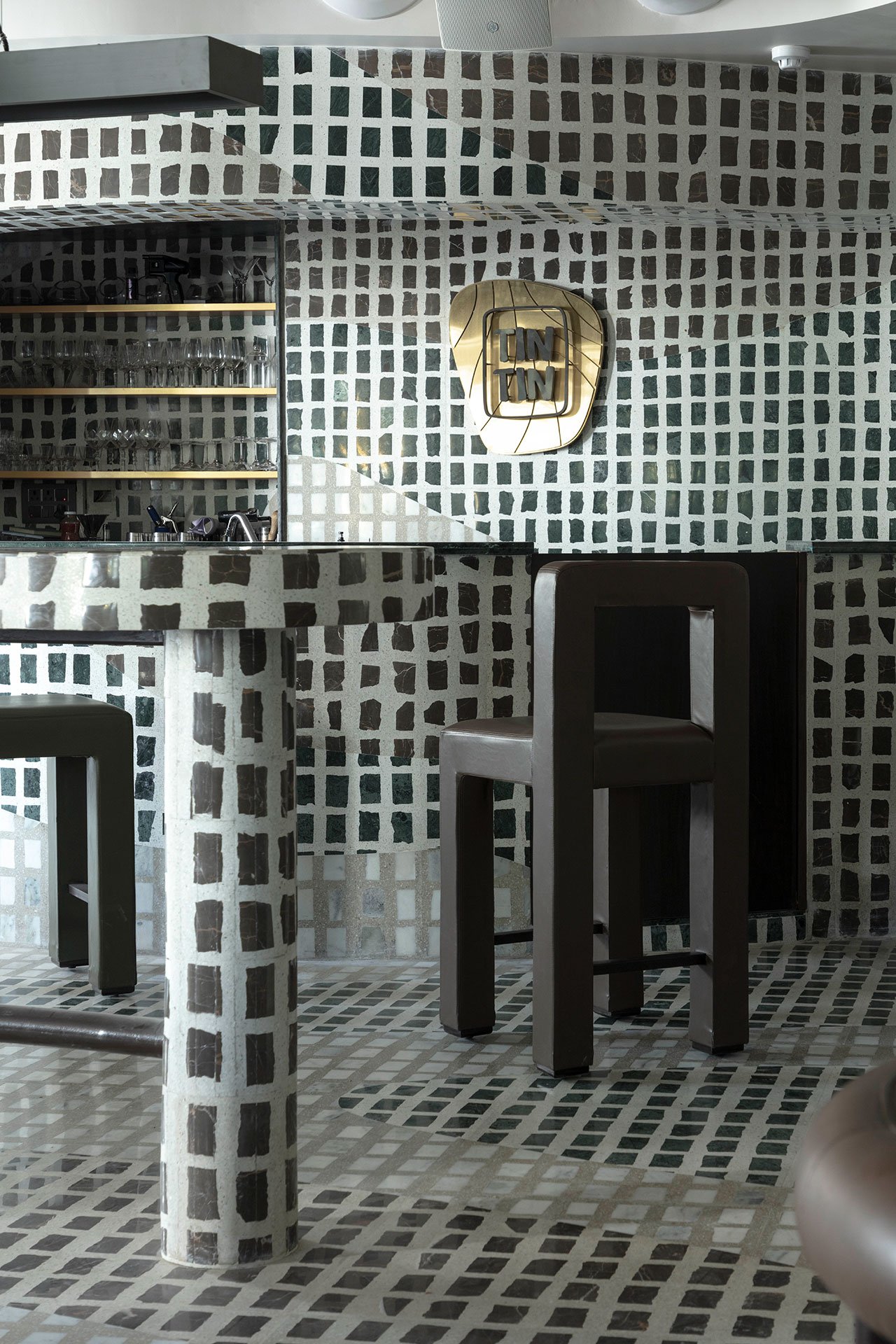
Photography by Niveditaa Gupta.
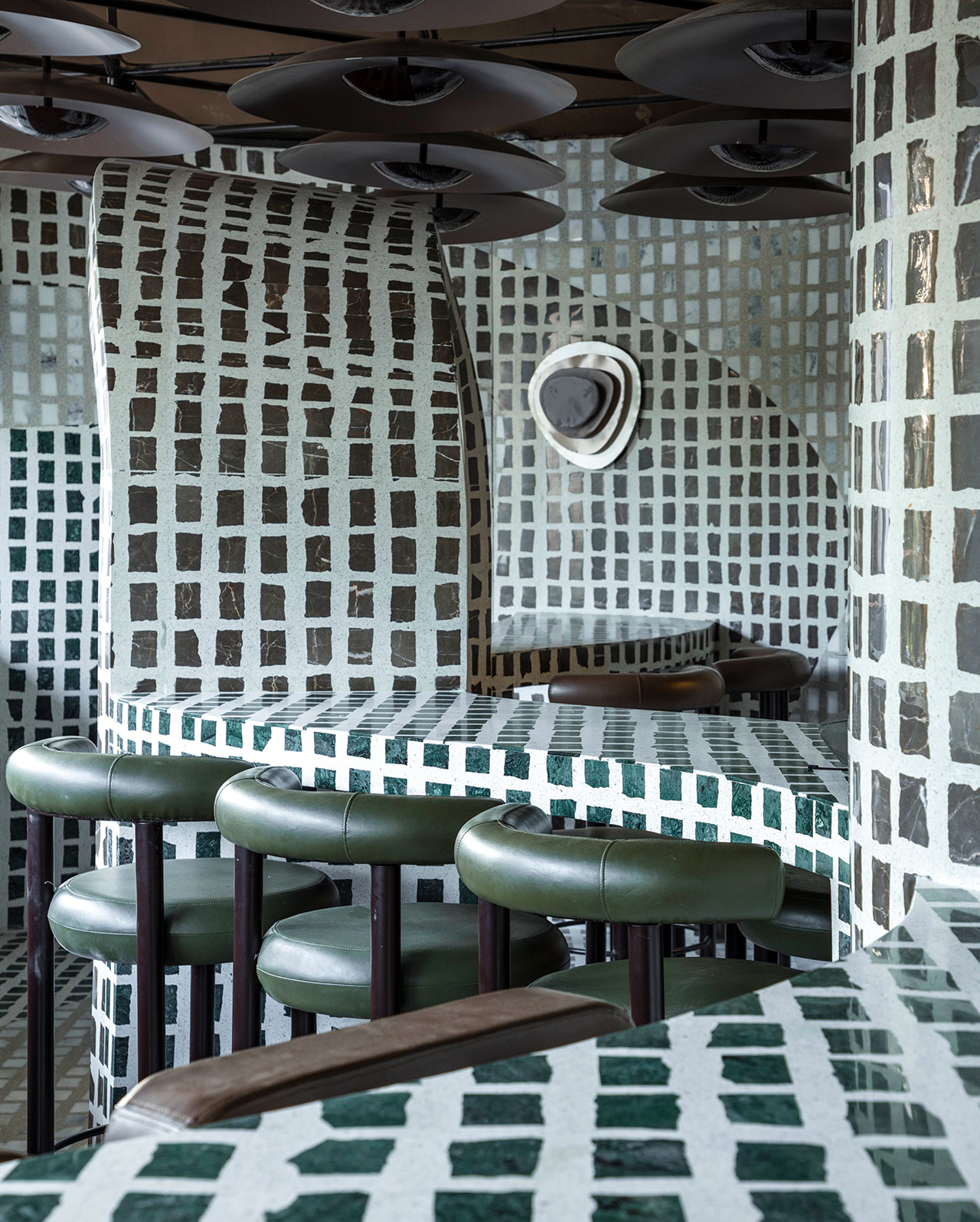
Photography by Niveditaa Gupta.

Photography by Niveditaa Gupta.
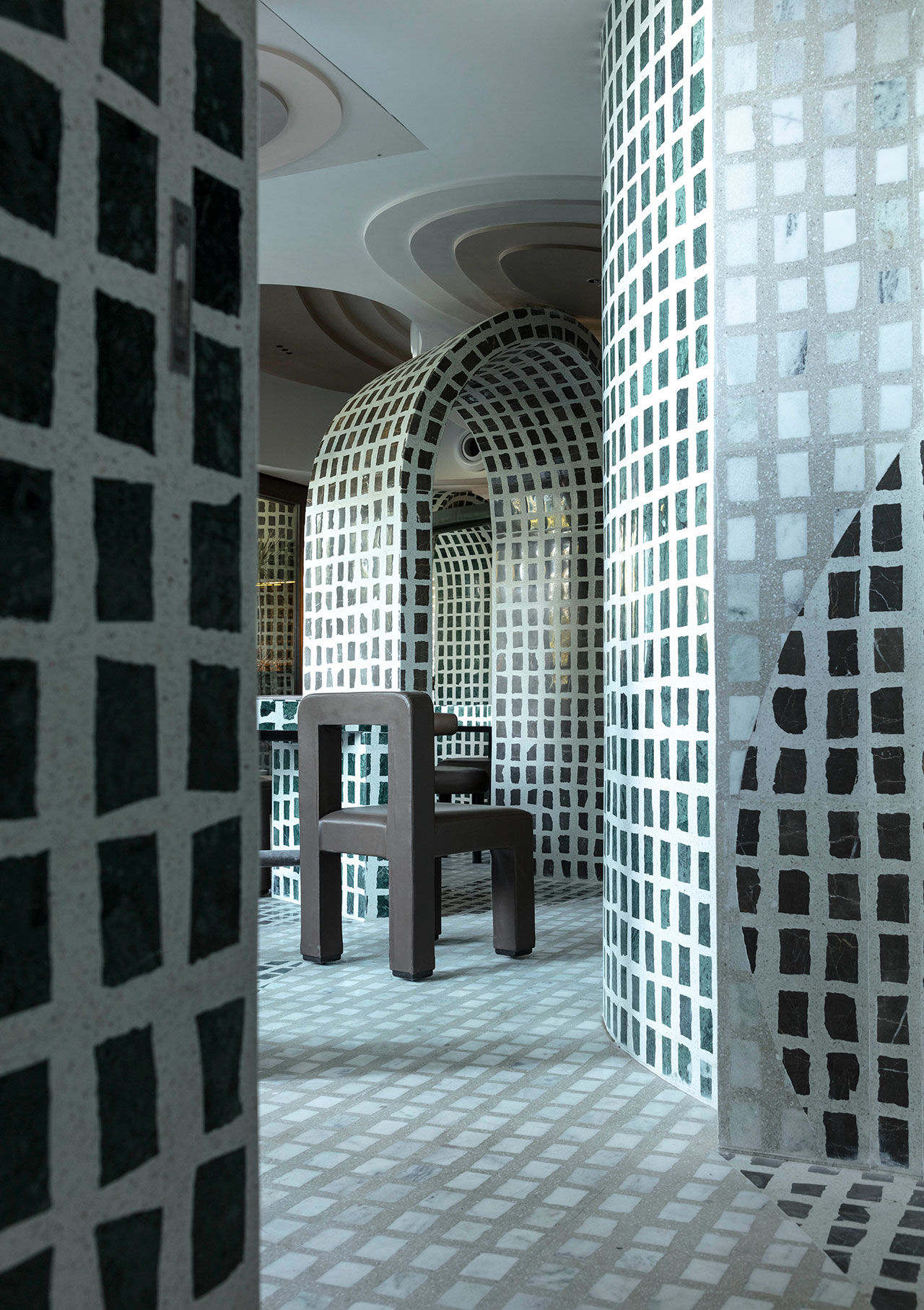
Photography by Niveditaa Gupta.

Photography by Niveditaa Gupta.

Photography by Niveditaa Gupta.
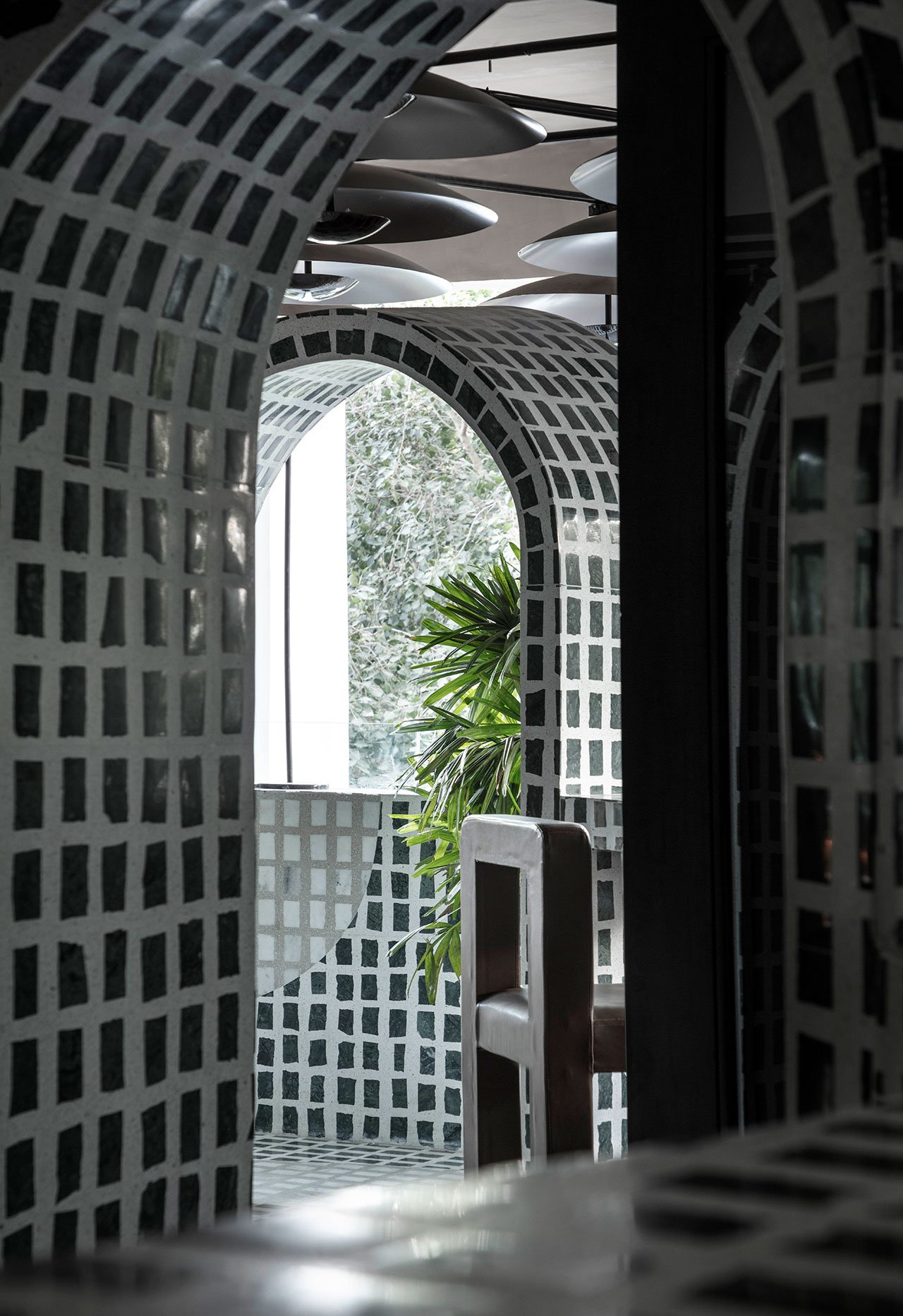
Photography by Niveditaa Gupta.
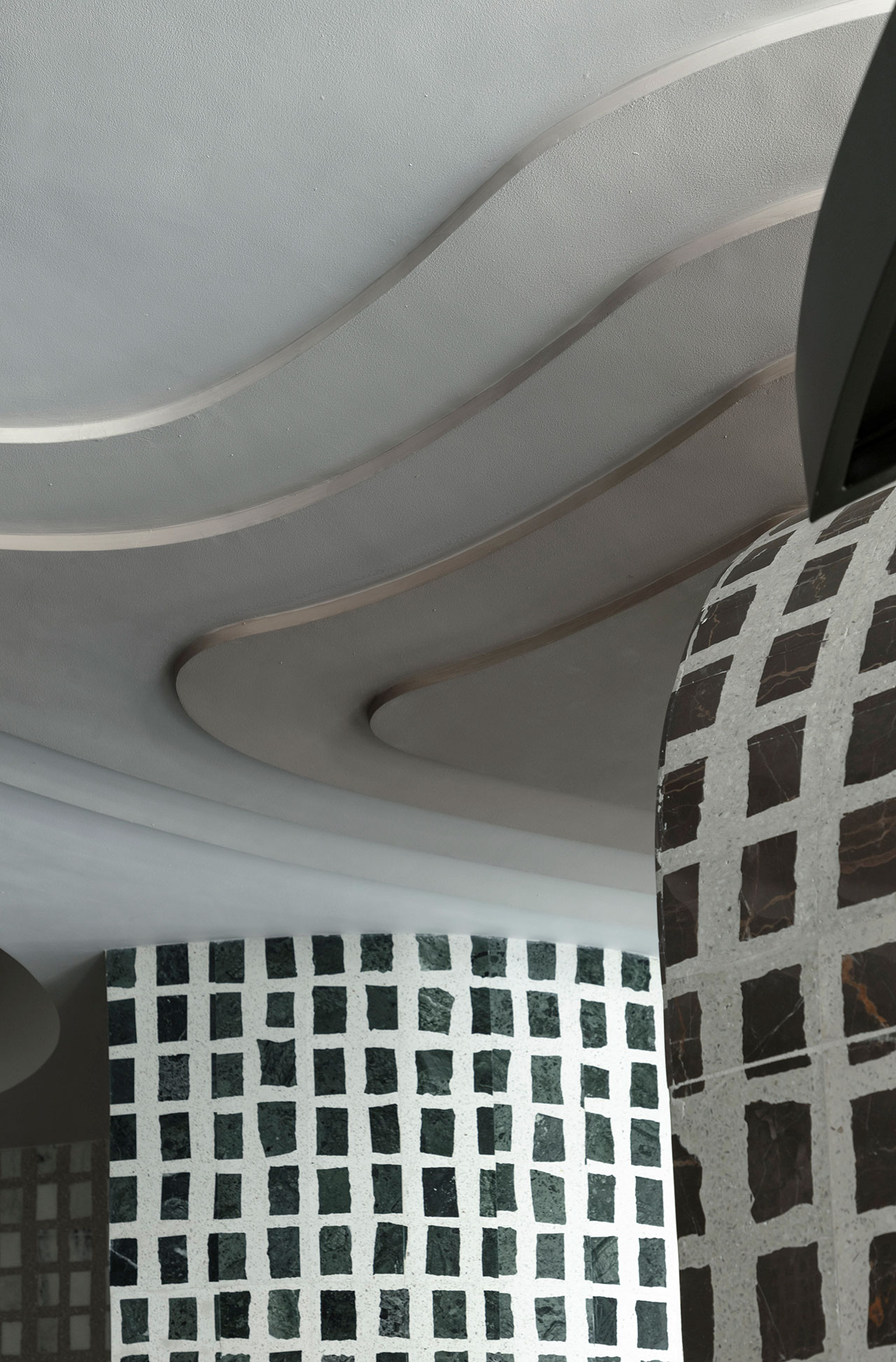
Photography by Niveditaa Gupta.
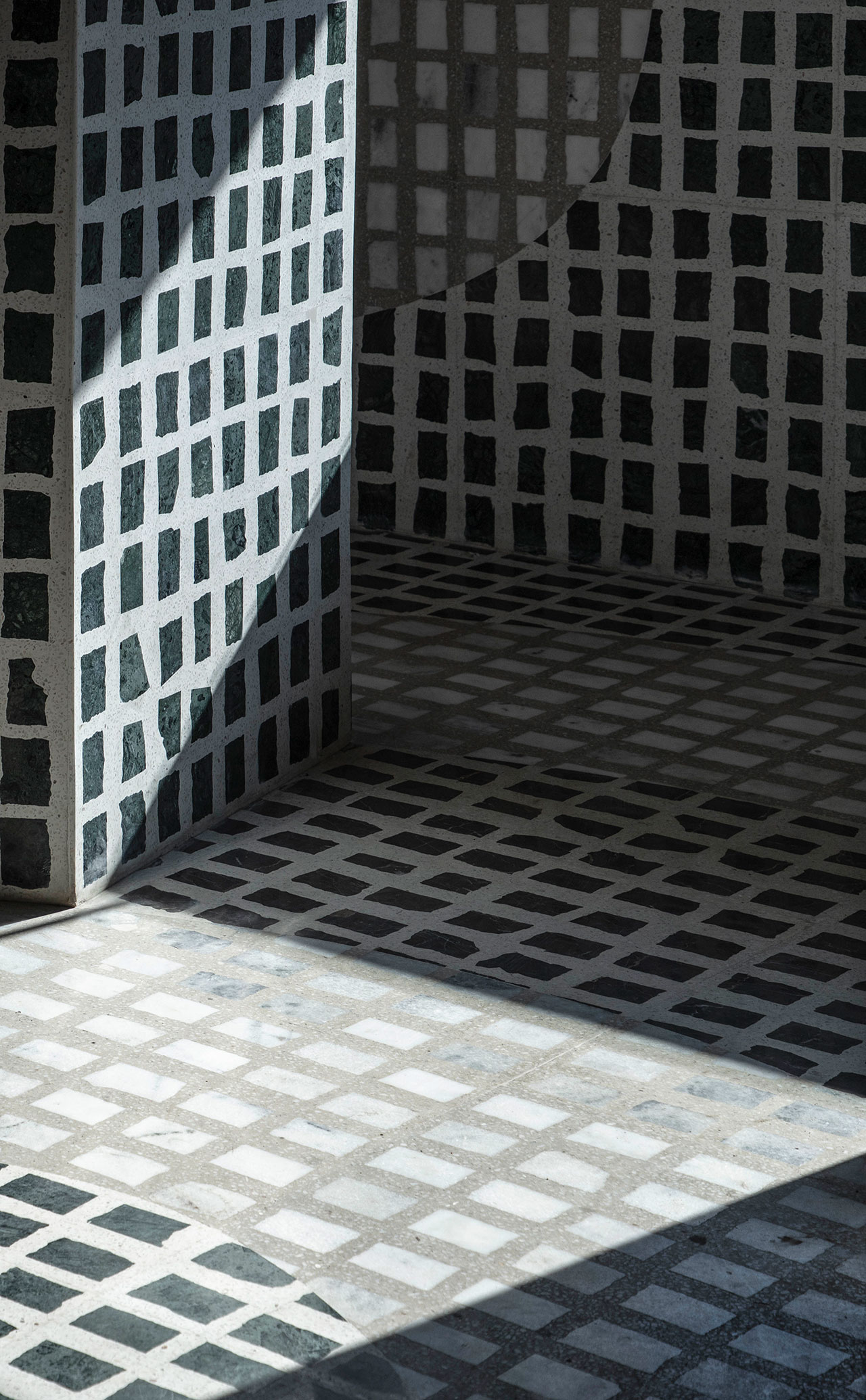
Photography by Niveditaa Gupta.
What makes the design of Tin Tin so powerful is the unorthodox combination of radically contradictory elements, namely the juxtaposition of the convoluted layout and curvaceous forms with the rigid geometry of the gingham-like stone and terrazzo mosaics. Laboriously hand-laid by local craftsmen over the course of six months, the mosaic tiling covers the floor, walls and built-in furnishings creating a three-dimensional geometric tapestry where sinuous shapes subtly emerge through the selective use of jade, brown, white and grey-beige stone inlays.
The graphic shapes delineated by the coloured stone inlays are accentuated by the curvilinear silhouettes of the furniture, both built-in and freestanding, as well as by the contoured ceilings, snake-like pendant lights and organic shapes of the wall lamps in the central dining area. In contrast, the orderly grid of circular pendants that crowd the street-facing perimeter zone echoes the checkered pattern of the mosaics. Leather upholders banquettes and chairs offer yet more curvaceous forms while adding soft accents.
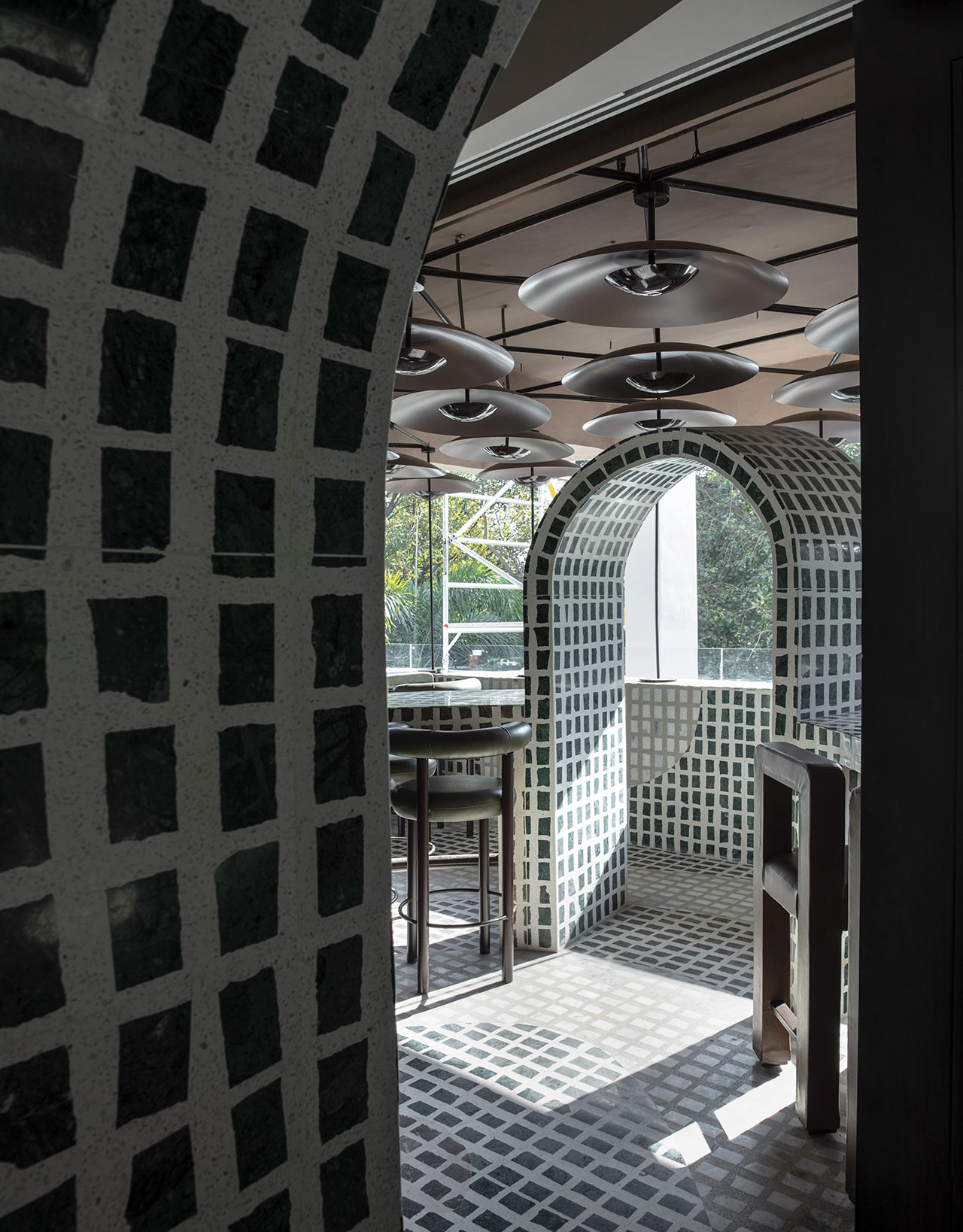
Photography by Niveditaa Gupta.
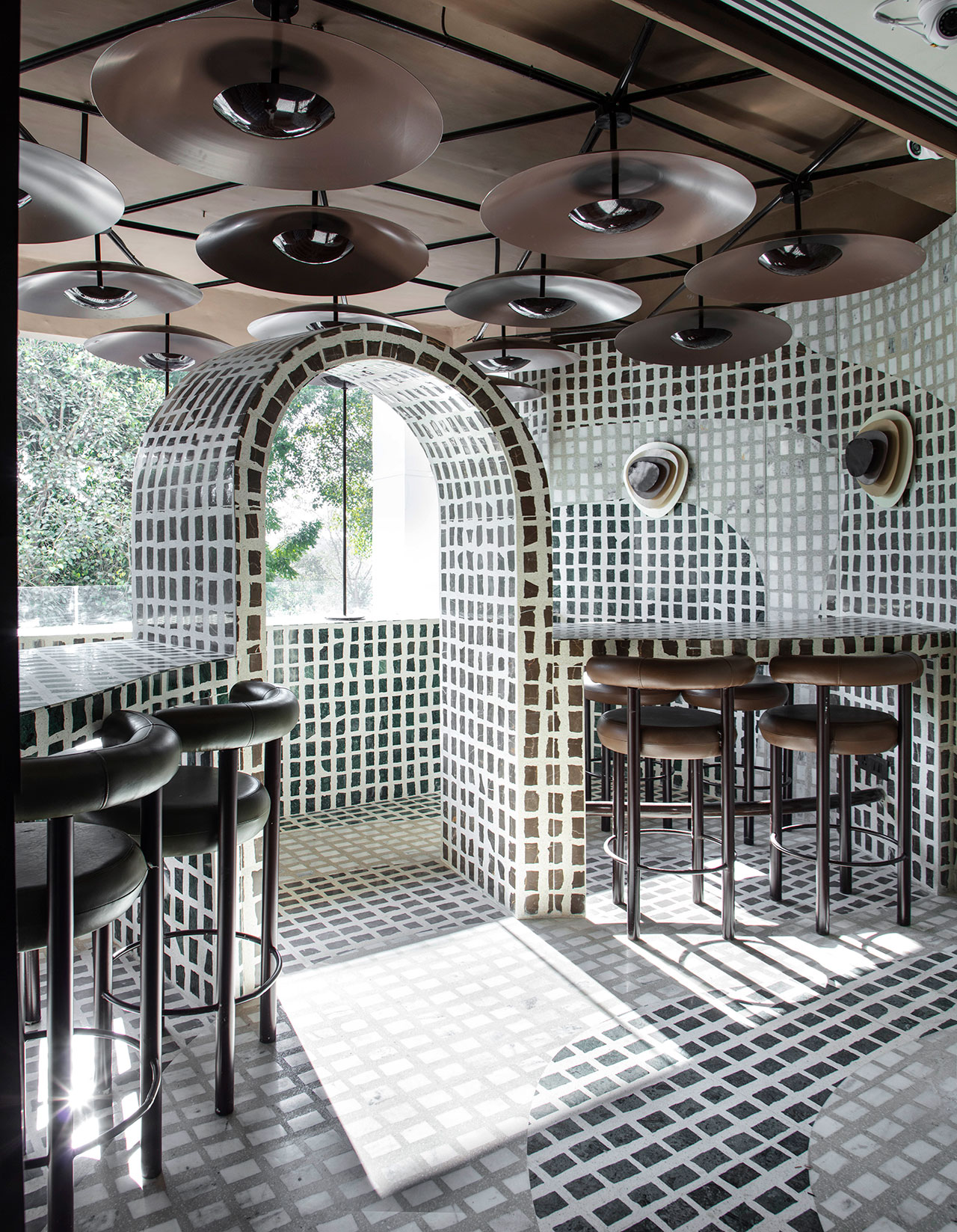
Photography by Niveditaa Gupta.
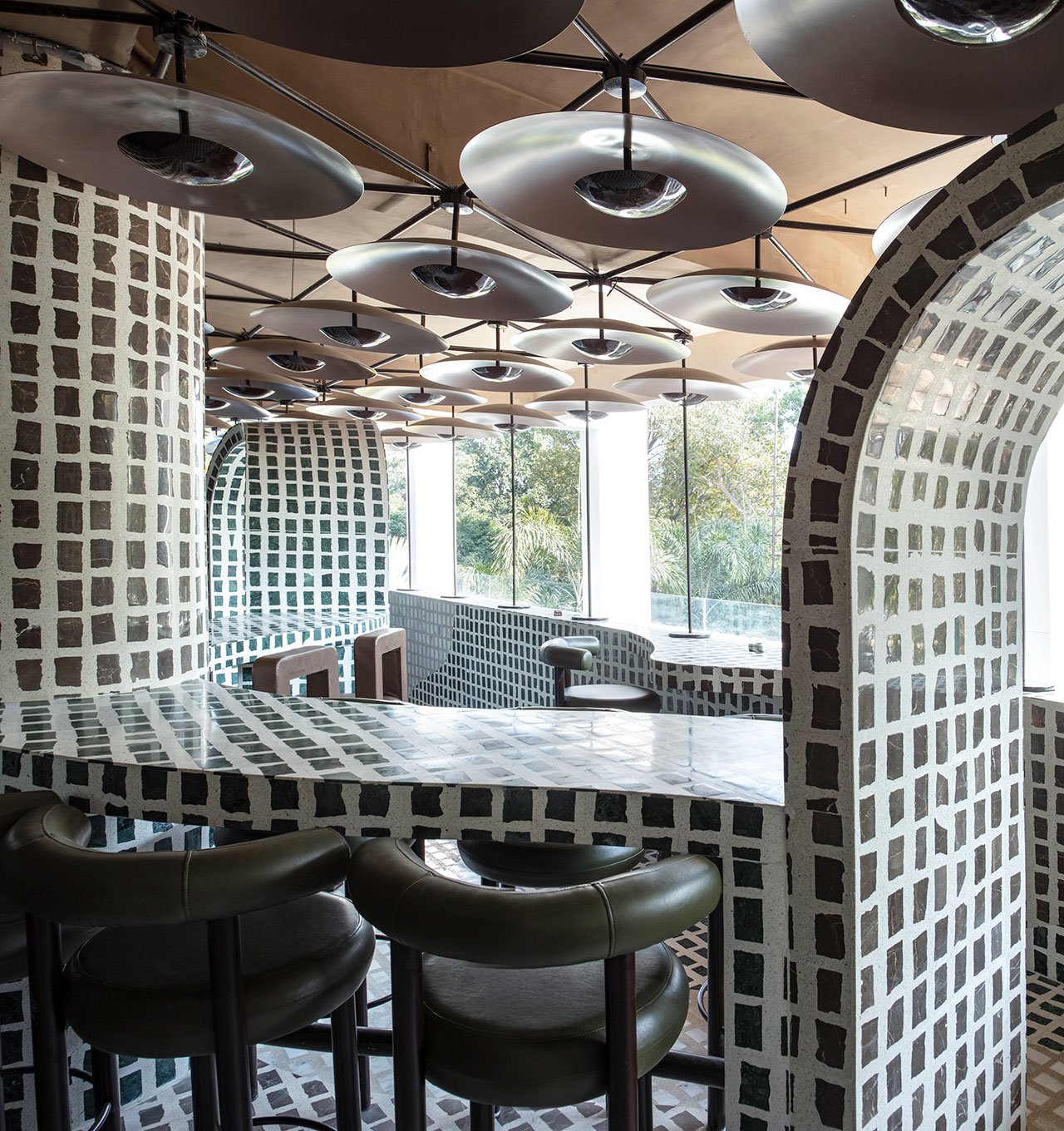
Photography by Niveditaa Gupta.
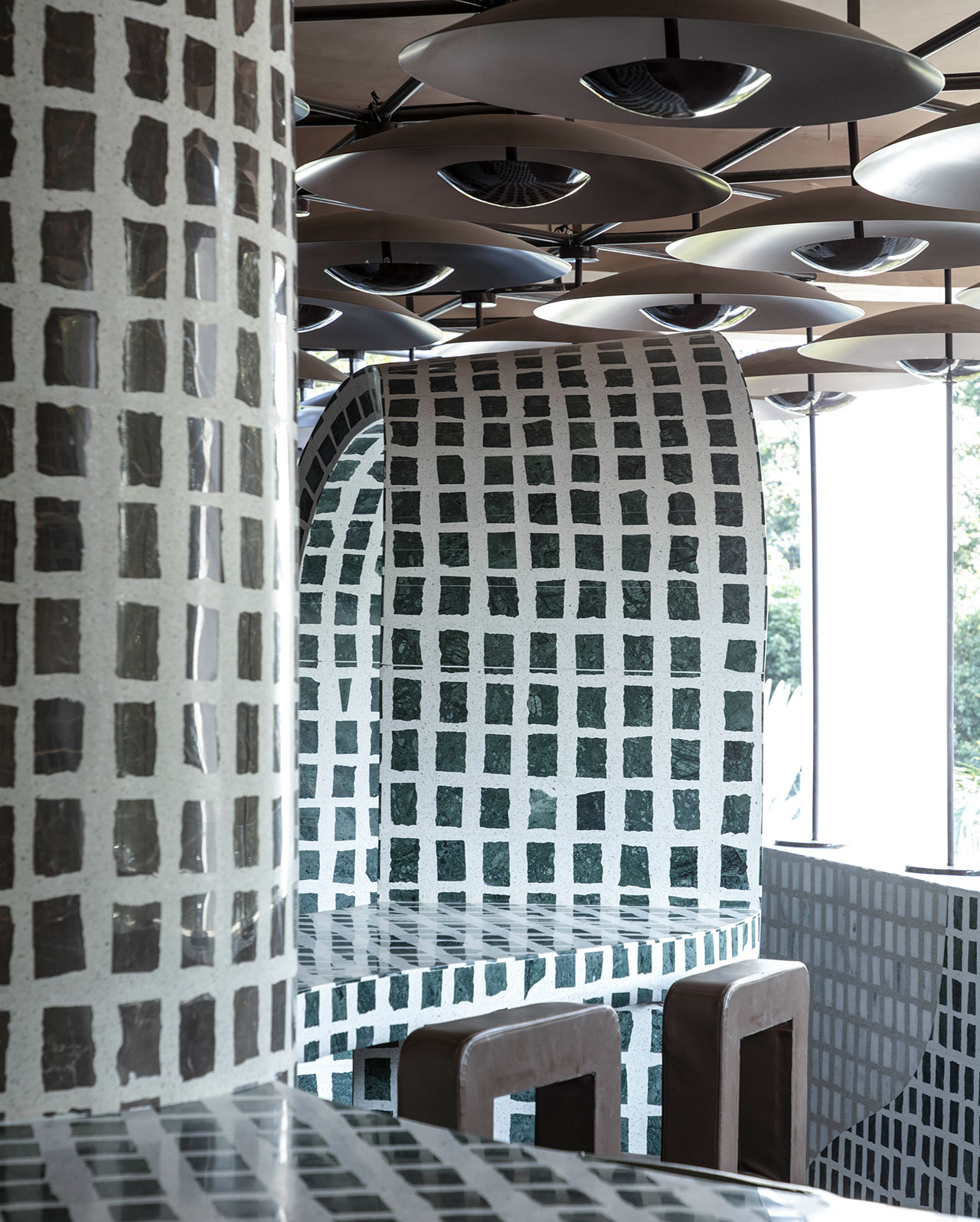
Photography by Niveditaa Gupta.
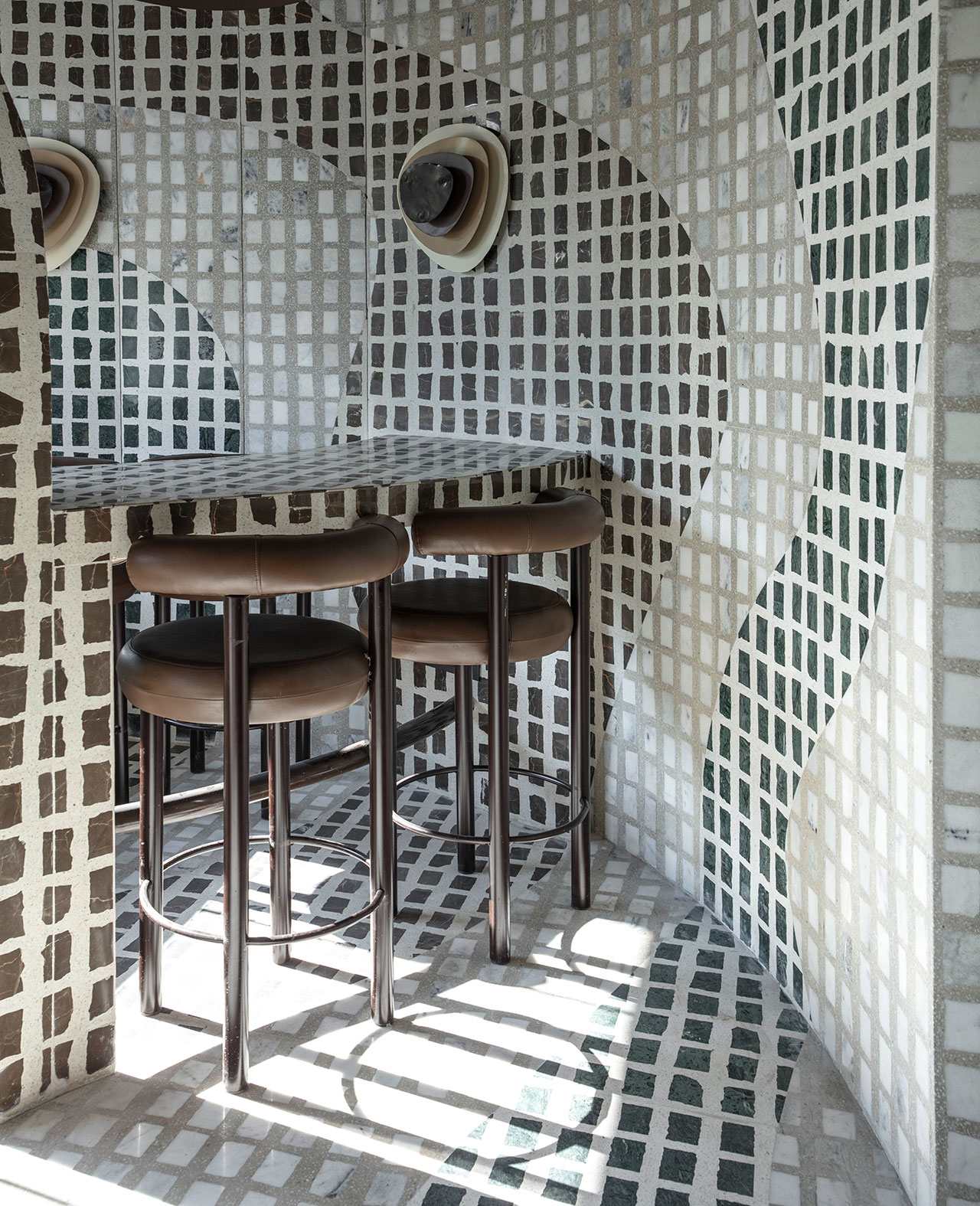
Photography by Niveditaa Gupta.

Photography by Niveditaa Gupta.

Photography by Niveditaa Gupta.
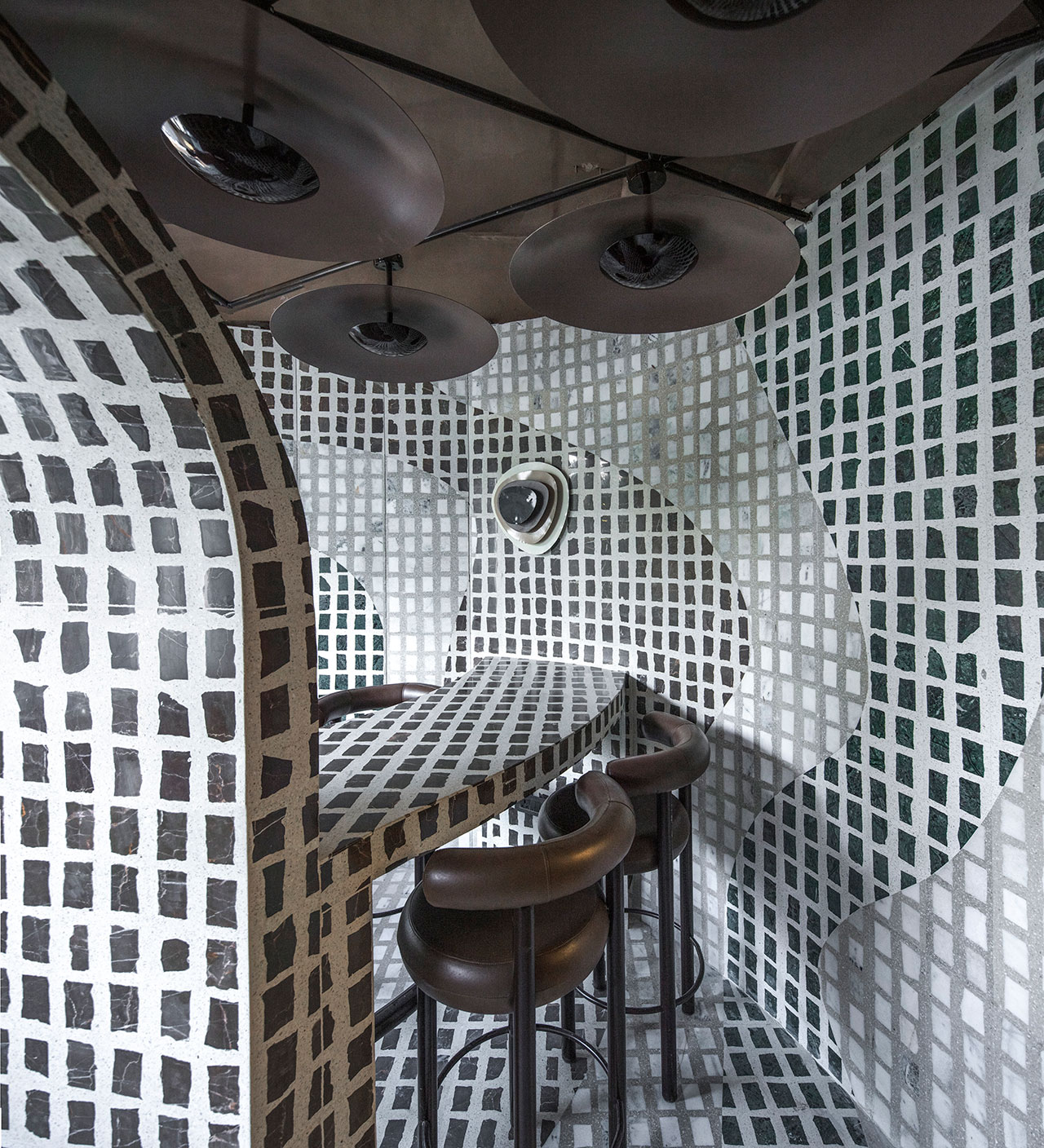
Photography by Niveditaa Gupta.
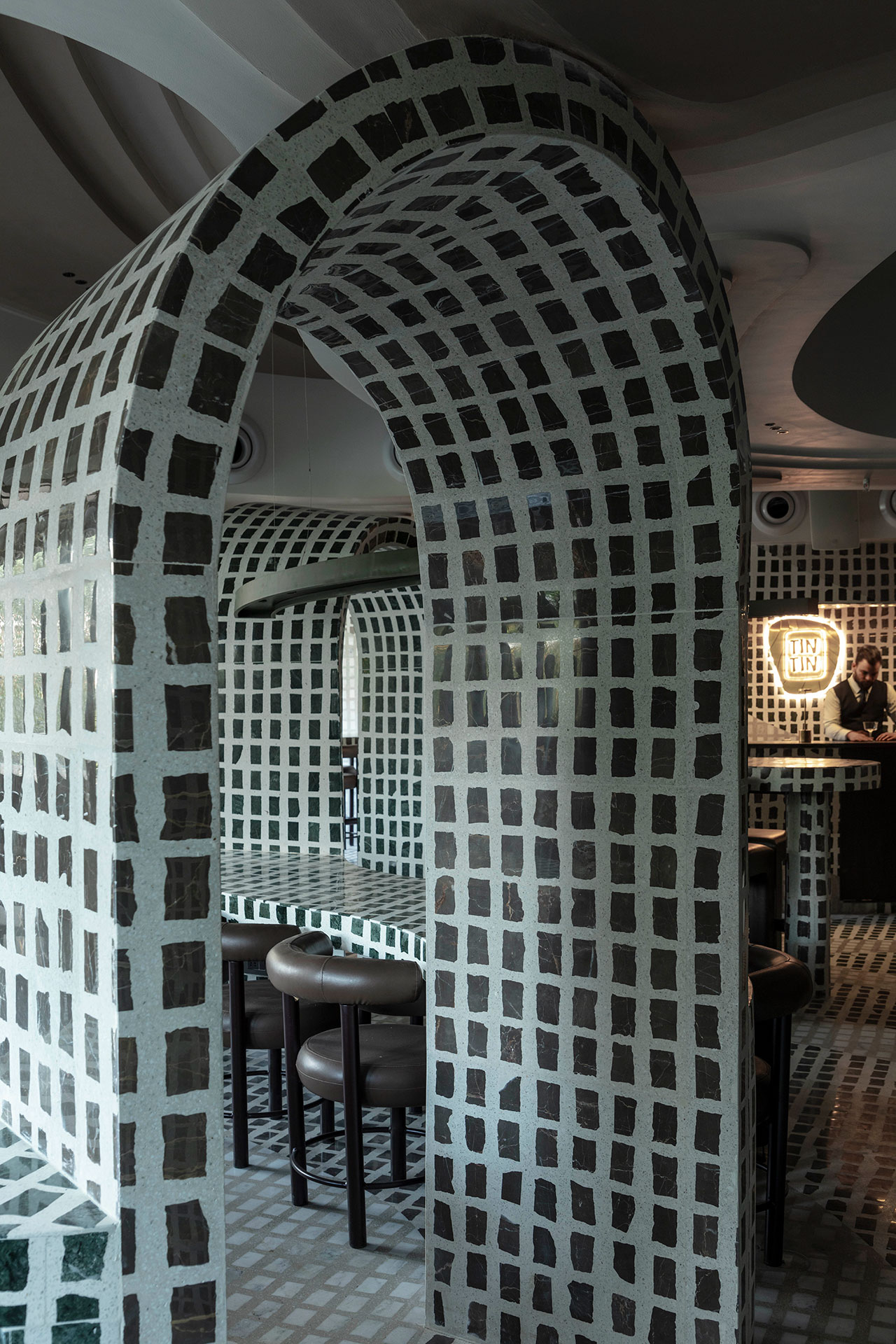
Photography by Niveditaa Gupta.
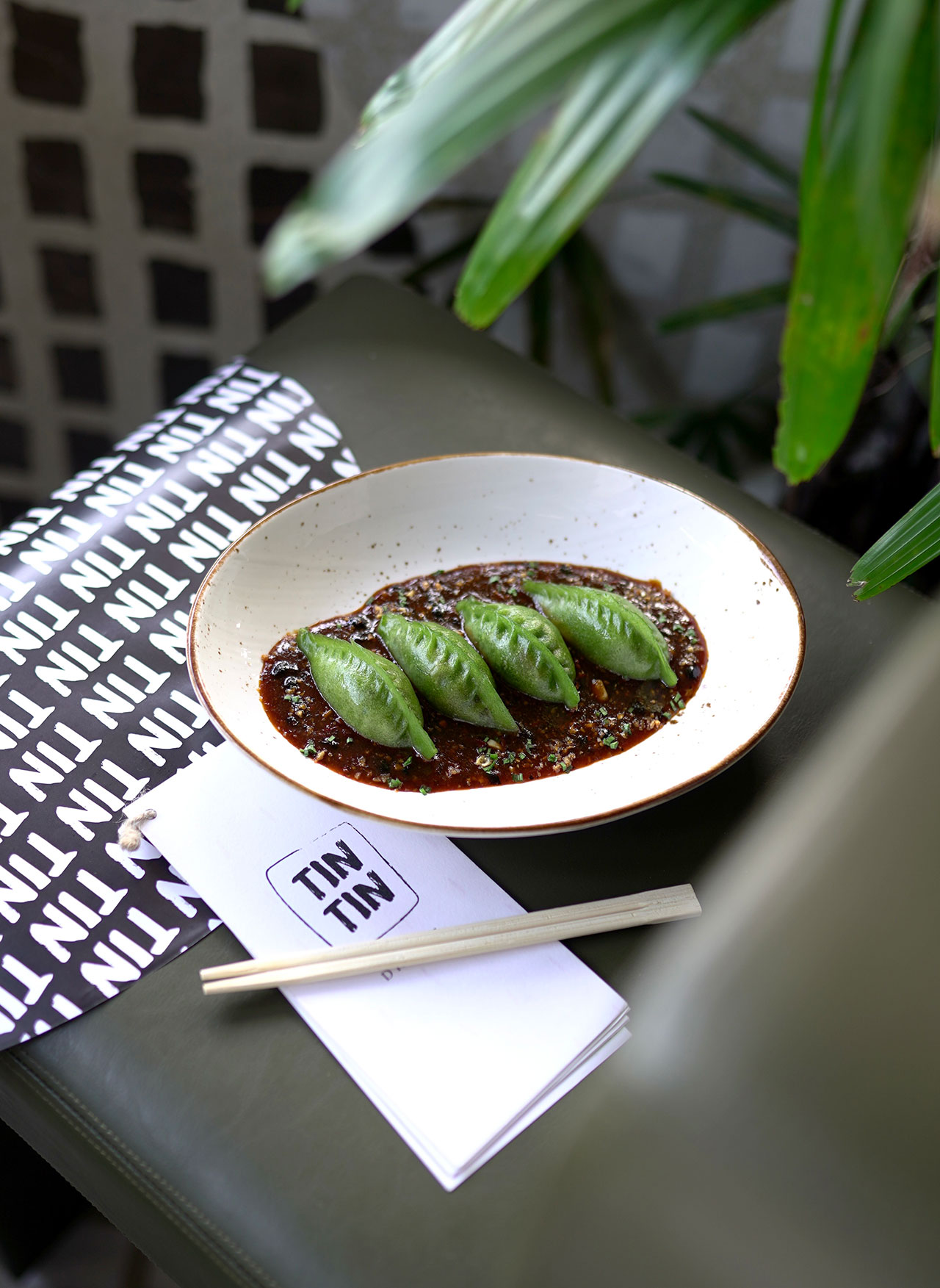
Photography by Niveditaa Gupta.
Underpinned by an intricate composition of arched portals and winding counters, the labyrinthic layout conveys a sense of wonder and mystery. In a more practical sense, the maze-like configuration creates a variety of dining zones that range from standalone high tables and private dining nooks, to snaking community tables, allowing the venue to effortlessly transition from a peaceful eatery in the day to a high energy lounge at night.
The result is a space that feels simultaneously minimalist in its graphic uniformity whilst being unapologetically over the top in its sculptural abstraction and tactile richness.
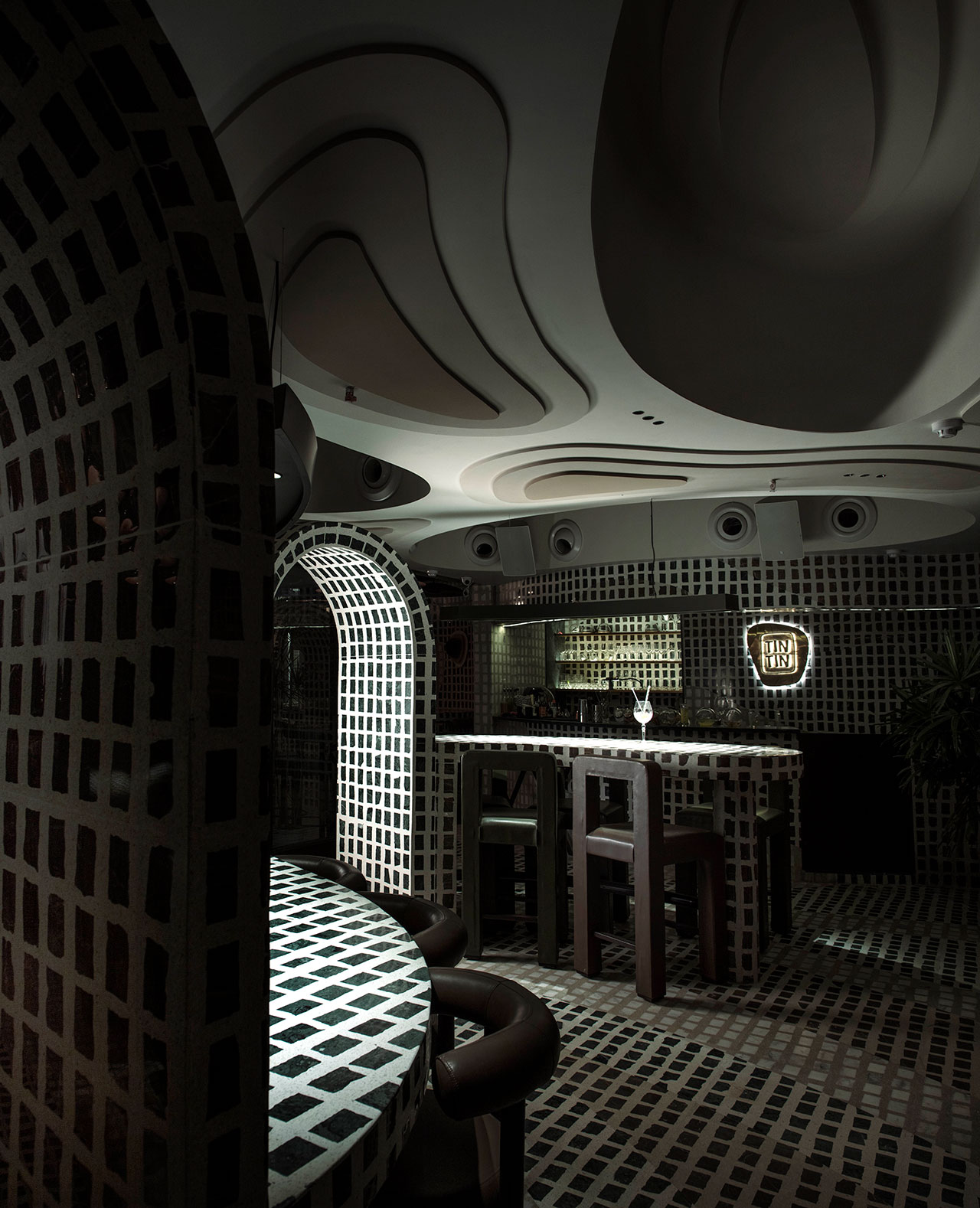
Photography by Niveditaa Gupta.
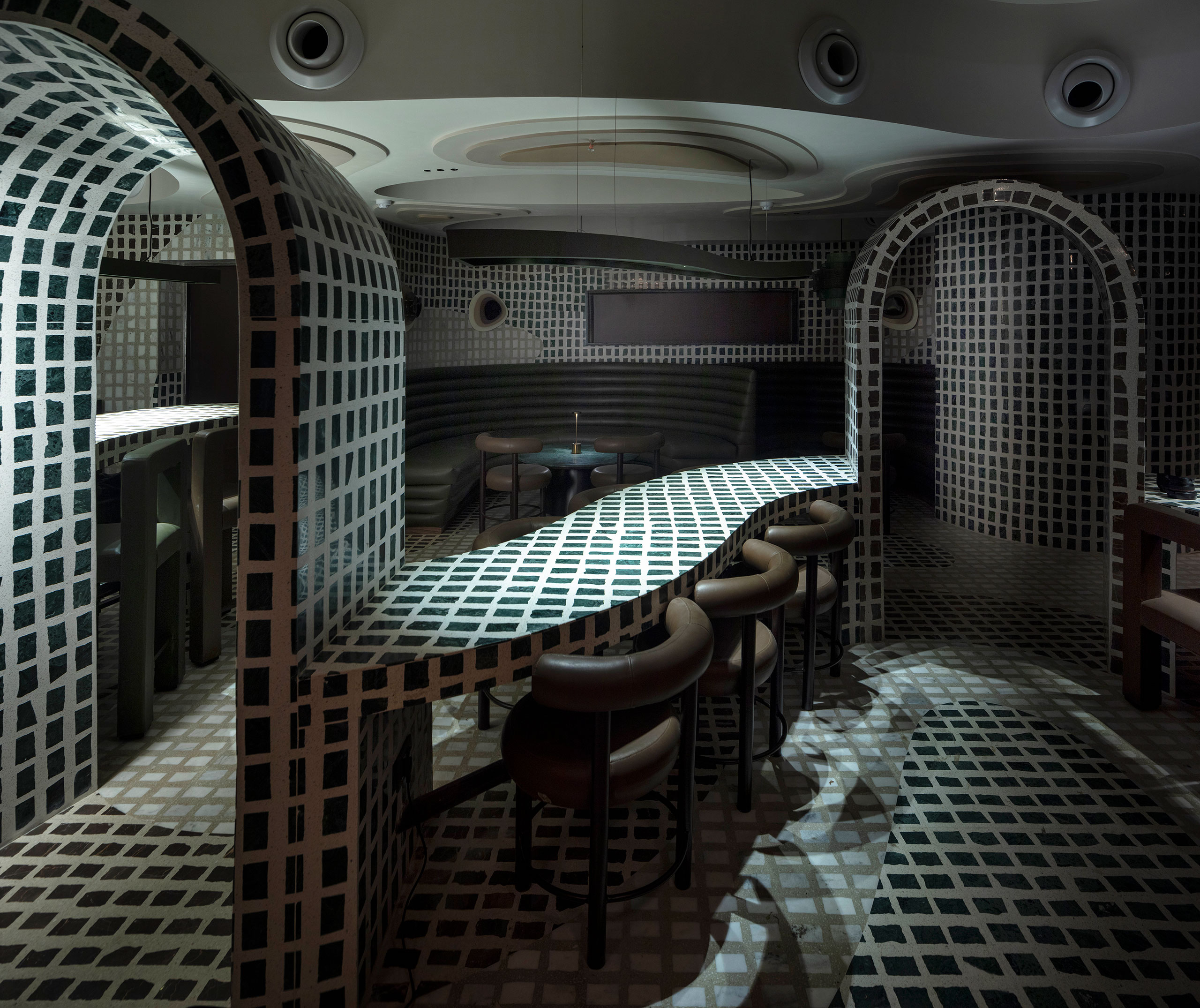
Photography by Niveditaa Gupta.
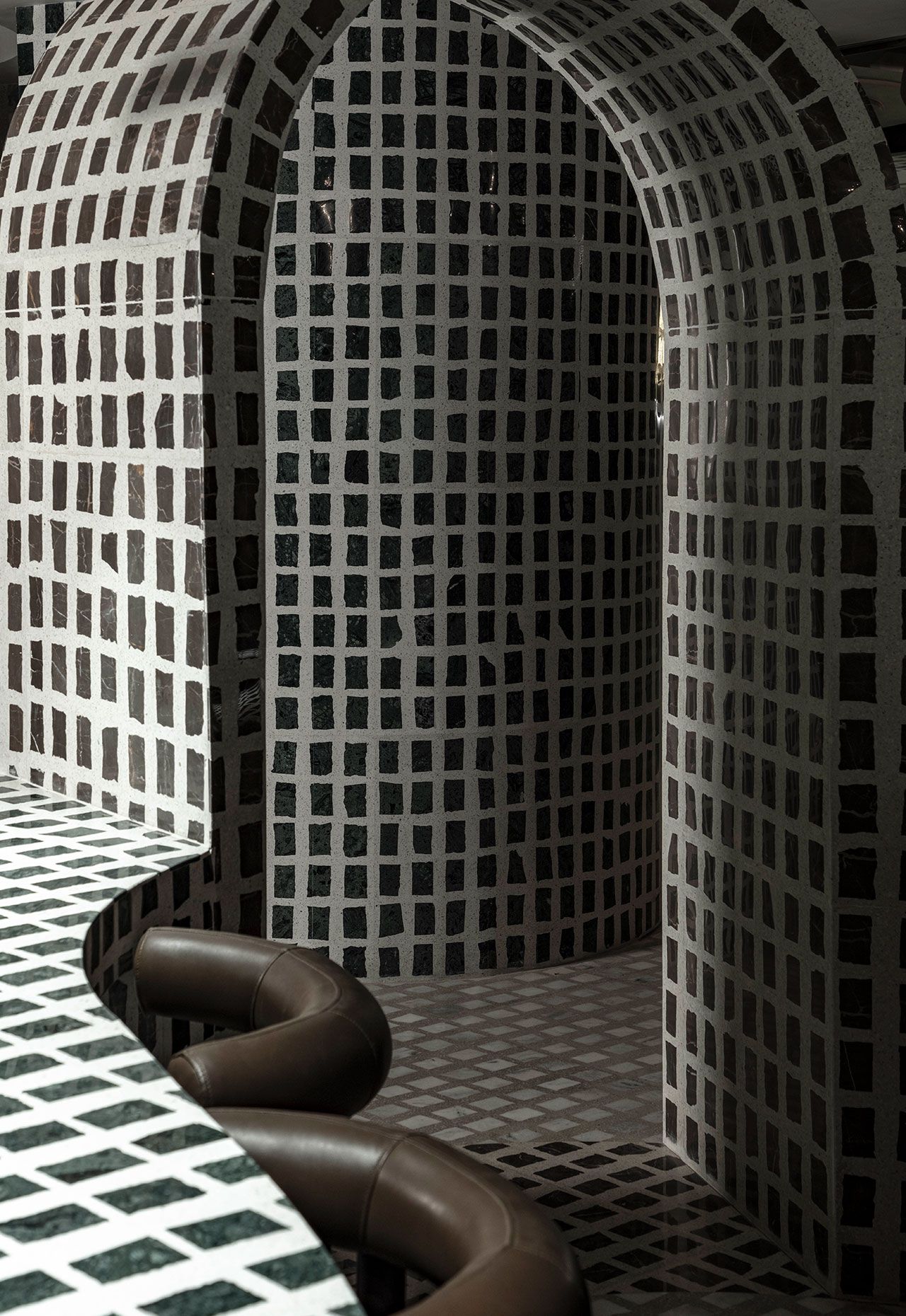
Photography by Niveditaa Gupta.
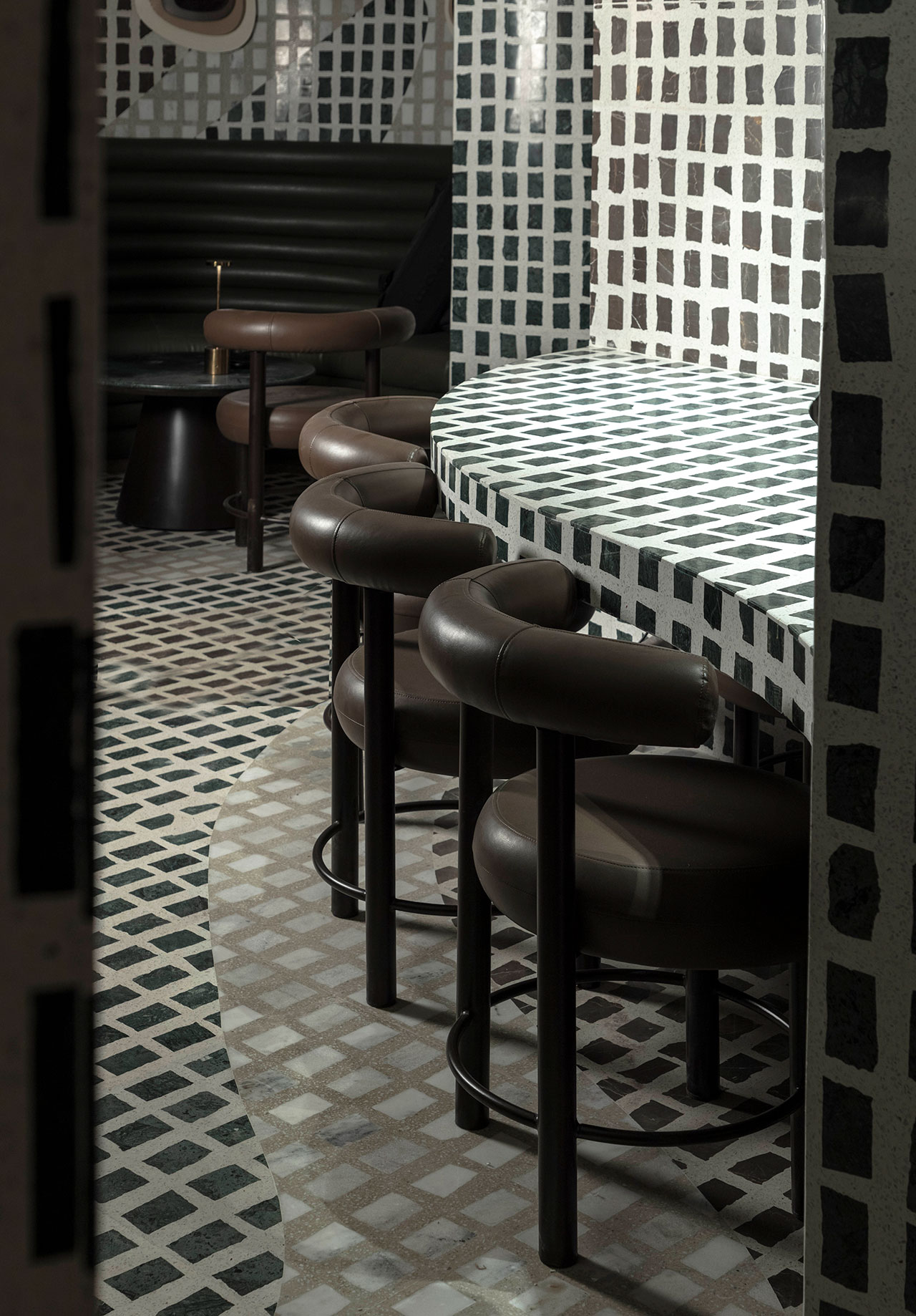
Photography by Niveditaa Gupta.

Photography by Niveditaa Gupta.

Photography by Niveditaa Gupta.
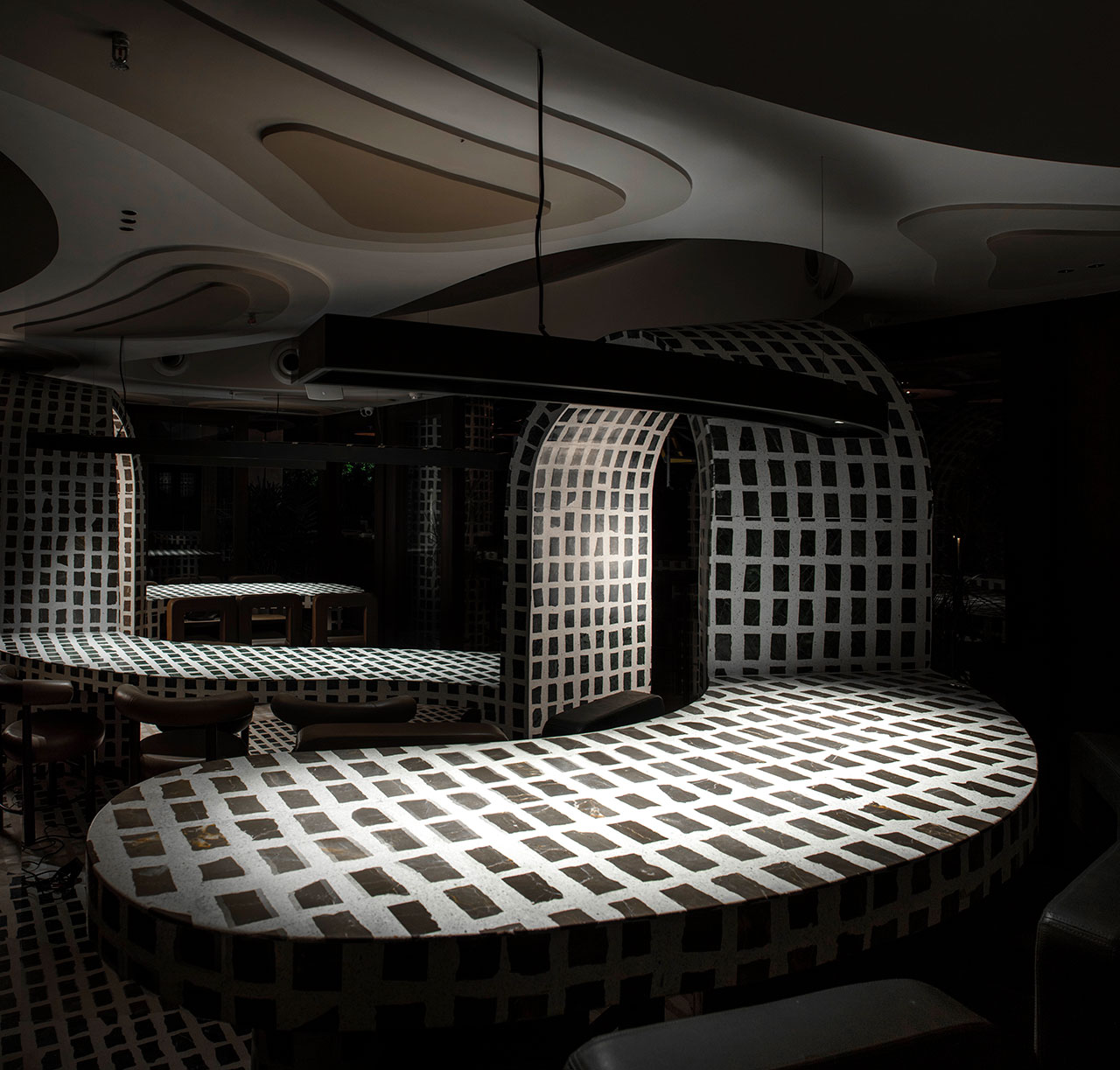
Photography by Niveditaa Gupta.
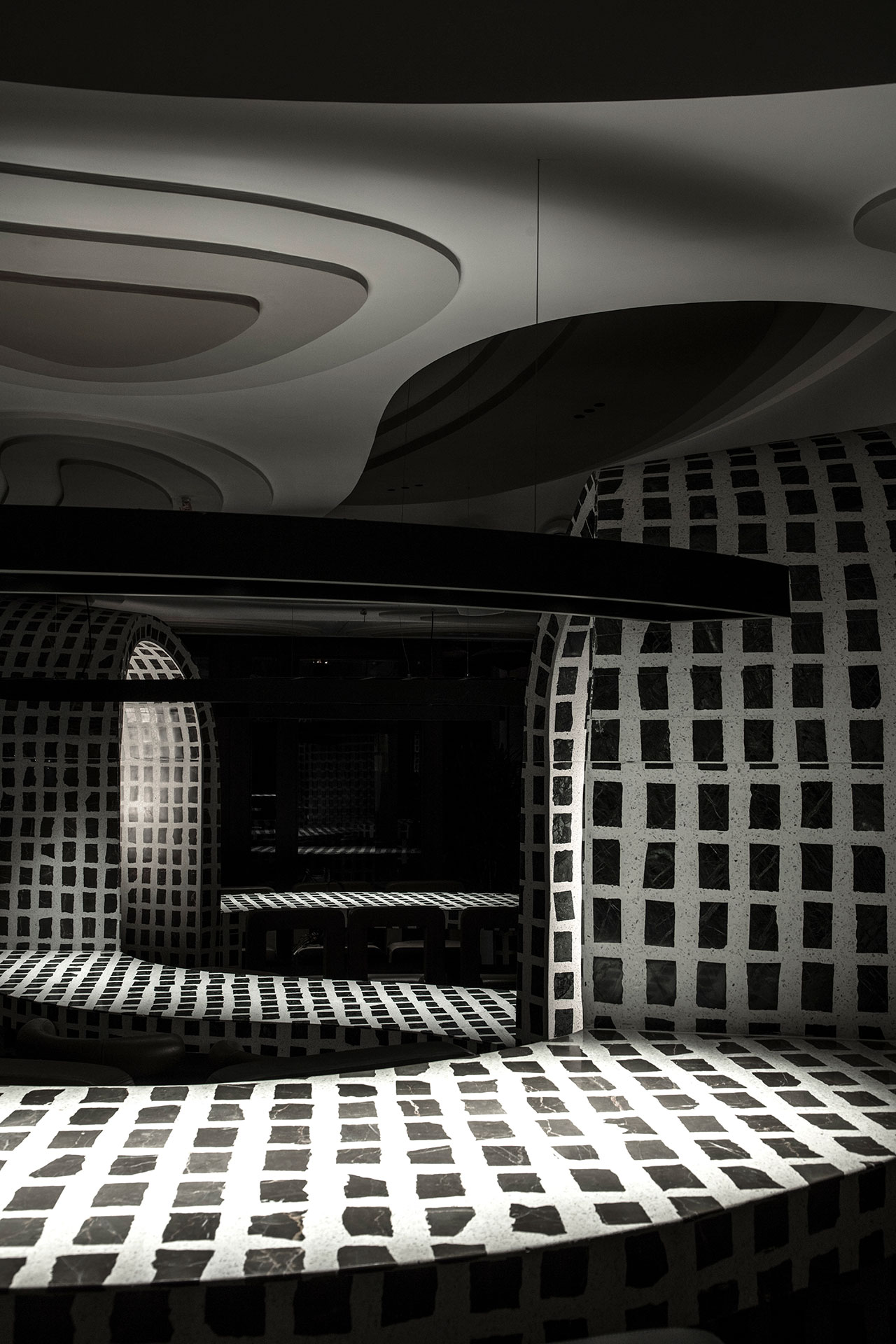
Photography by Niveditaa Gupta.

Photography by Niveditaa Gupta.

Photography by Niveditaa Gupta.














